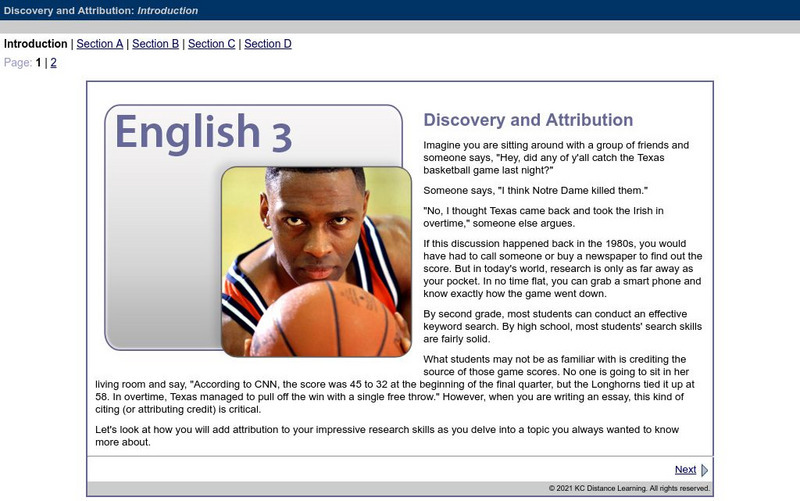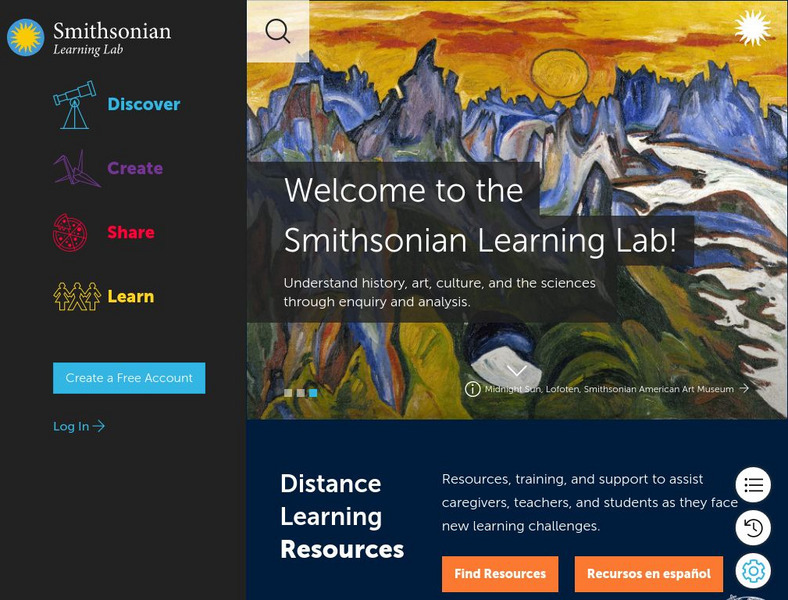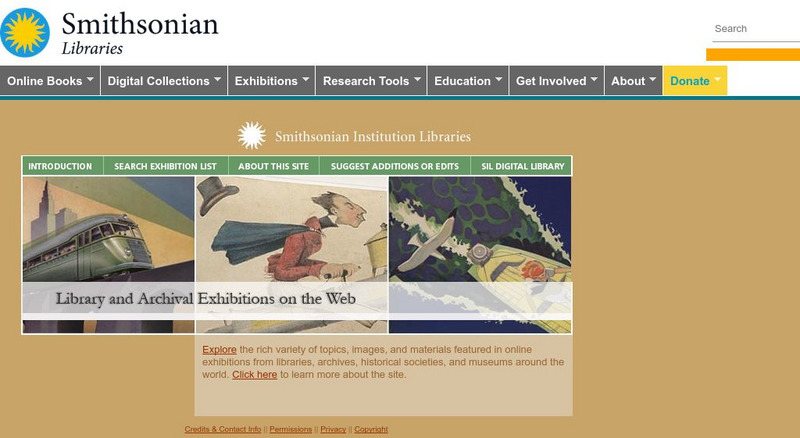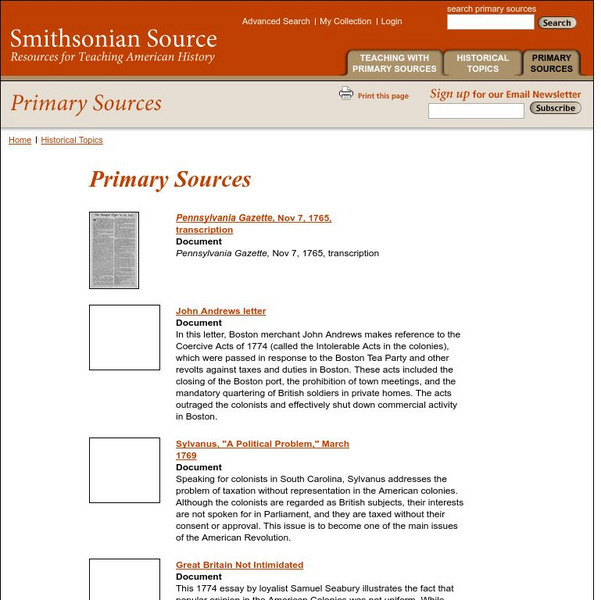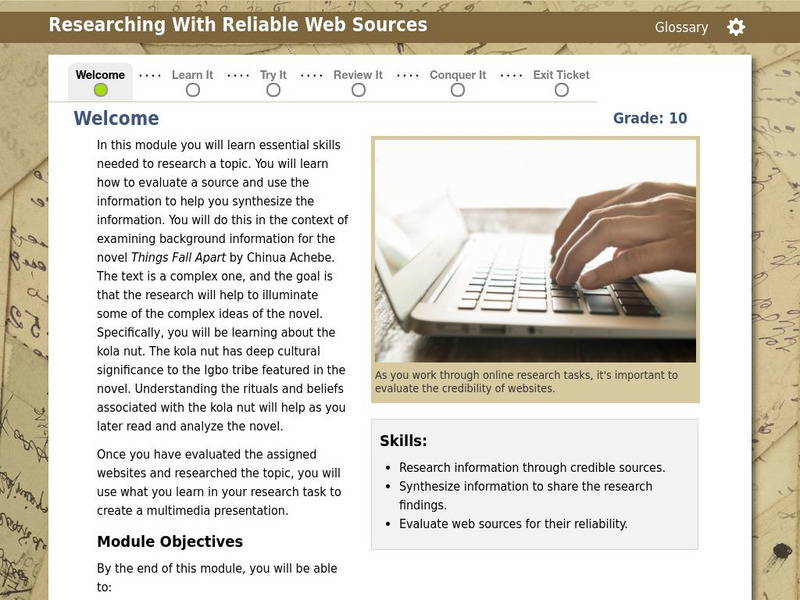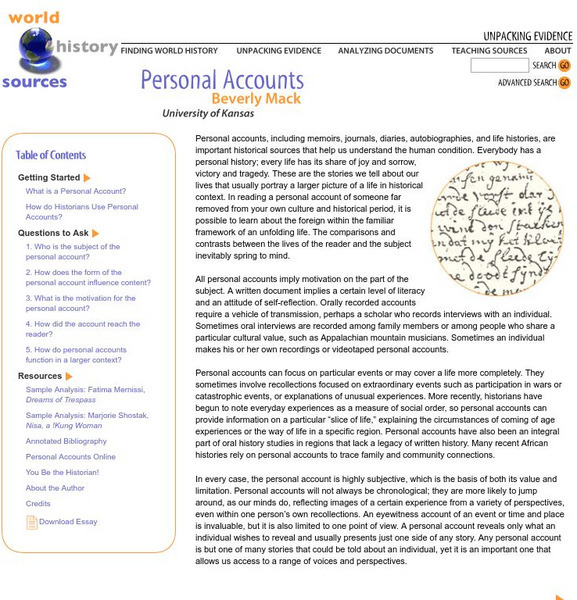Texas Education Agency
Texas Gateway: Reference Materials Printed and Electronic
Learn how to use dictionaries, glossaries, and thesauri in order to determine meanings of words and phrases, including their denotations, connotations, and etymologies.
Virginia Tech
Digital History Reader: Introduction
An online learning module for the U.S. and European history. Presents central questions of key events in history. Students explore data, evaluate conflicting accounts or interpretations, and develop conclusions based on primary evidence....
Center for Innovation in Engineering and Science Education, Stevens Institute of Technology
Ciese: Historical Treasure Chests
After learning to distinguish between primary and secondary sources, students will examine four primary documents and address a set of questions for each.
University of California
University of California, Davis: The History Project
The History Project is a growing collection of lesson plans, teaching tools, digitized images, and documents for the teaching of history. Includes assignments for having students apply analytical skills to primary sources.
Colorado State University
Colorado State University: The Wac Clearinghouse
Although this site is primarily designed for instructors at the post-secondary level, the information and suggestions given can also be used, with only minor changes, at the high school or middle school levels as well. Learn ways for...
American Rhetoric
American Rhetoric: Communication Journals
This is an index of communication journals and their publishers with links to the journals.
Department of Defense
Do Dea: Discovery and Attribution
The research process can be daunting, but it doesn't have to be overwhelming! After you complete this self-guided unit, you will be well prepared to write a research paper. You will learn how to choose a topic, evaluate the reliability...
Smithsonian Institution
Smithsonian Learning Lab: Teaching With Primary Sources
Five lesson plans, complete with videos, primary sources, and document-based questions (DBQ) to encourage students to utilize primary sources and incorporate thinking and writing into daily learning. Topics include: Artifact &...
Department of Defense
Do Dea: English 4; Wealth and Poverty
A learning module asking students to analyze different types of texts, learn literary terms, write a satirical essay and a mock newspaper article, and work with vocabulary skills all within themes related to wealth and poverty.
Other
Using Sources Effectively
This site provides hints and guidelines on how to effectively use sources.
Smithsonian Institution
Smithsonian Libraries: Library & Archival Exhibitions on the Web
This index of links offers the opportunity to explore important and interesting topics. Visiting links on the desired topic is most likely to provide primary sources or at least point students in the right direction.
Smithsonian Institution
Smithsonian: Engaging Students With Primary Sources
This reference guide is designed to highlight the benefits of using primary source materials in any classroom and to provide the teacher with practical suggestions and examples of how to do this. It includes a bibliography and links to...
Harry S. Truman Library and Museum
Truman Library & Museum: Incorporating Primary Sources in the Classroom
Students and teachers are given direction in how to work with the primary source materials of the Harry S Truman Presidential Library.
Smithsonian Institution
Smithsonian Source: Resources for Teaching American History: Primary Sources
A varied collection of primary resources from American history. They include portraits, banknotes, artifacts, newspaper items, paintings, and illustrations.
Other
Usa Gov: u.s. History and Historical Documents
Discover highlights from American history, including military events and founding documents.
Thinkport Education
Thinkport: Researching With Reliable Web Sources
A module to learn essential skills needed to research a topic.
Other
Harvest
Three modules explain what primary sources are; how to find primary sources in the UIUC archives; how to make sense of a primary source document by examining its creator, the context, and purpose of its creation.
Utah Education Network
Uen: Themepark: Liberty: United States Historical Documents
Find a large collection of internet resources organized around historical documents. Links to places to go, people to see, things to do, teacher resources, and bibliographies.
Thinkport Education
Thinkport: The Revolutionary Americas
Find relationships among primary and secondary sources of information that identify where information from different sources converges and where it differs.
George Mason University
George Mason University: World History Sources: Material Culture: Images
Investigate the meaning of different cultures' images and materials. Learn to examine different questions such as what is the image, what is the meaning, what is the function, and what is the social condition.
George Mason University
George Mason University: World History Sources: Newspapers
Discover how historians use newspapers and learn about the development of the modern newspaper. Get answers to many questions about different newspapers.
George Mason University
George Mason University: World History Sources: Official Documents
A guide to dissecting official documents. Learn how to find the author of documents, the primary audience, and other important information.
George Mason University
George Mason University: World History Sources: Personal Accounts
Discover how journals, memoirs, diaries, and autobiographies are important historical sources. Learn how historians use these personal accounts and get other questions answered.
George Mason University
George Mason University: World History Sources: Travel Narratives
Learn about the importance of travel accounts to history. Discover how the observations and experiences of travelers can play important parts in history.





